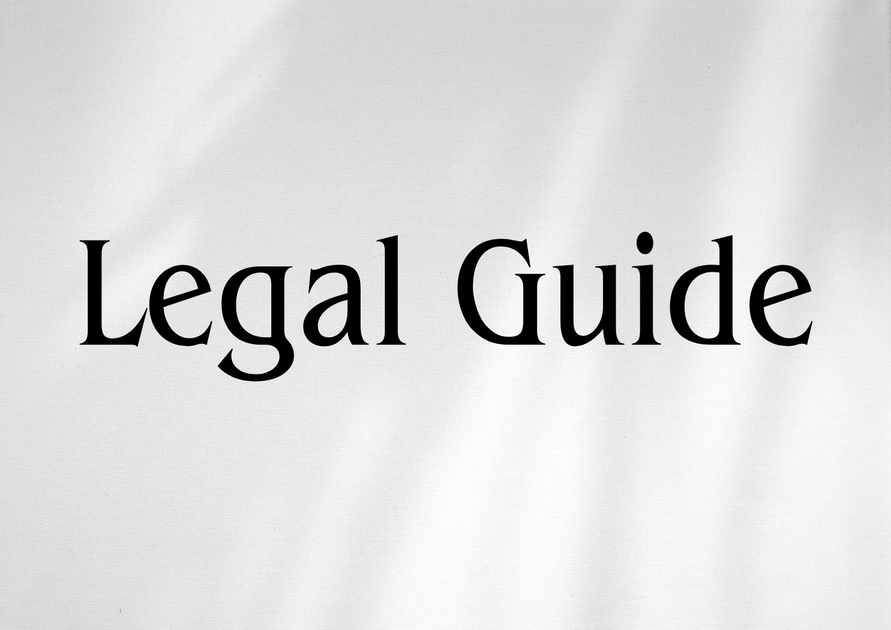Introduction: Navigating Saudi Arabia’s Intellectual Property Landscape
In the GCC’s era of rapid economic diversification, safeguarding intellectual property (IP) rights has become a cornerstone of both commercial innovation and cross-border business strategy. Nowhere is this more evident than in Saudi Arabia, whose recent developments in its IP regulatory framework hold profound implications for UAE-based businesses, investors, and legal professionals. As the Kingdom accelerates its Vision 2030 economic reforms—and as regional legal harmonization gains momentum—understanding how to protect, leverage, and enforce IP rights within Saudi Arabia is essential for UAE enterprises and entrepreneurs eyeing Gulf expansion or collaboration.
This comprehensive analysis provides an actionable roadmap for executives, legal counsels, and HR leaders navigating intellectual property rights in Saudi Arabia. Leveraging insights aligned with the standards of the UAE Ministry of Justice, UAE Government Portal, and Federal Legal Gazette, this guide illuminates legal foundations, regulatory evolutions, compliance risks, and strategic recommendations for robust IP protection.
Table of Contents
- Overview of Intellectual Property Law in Saudi Arabia
- Saudi Arabia’s Regulatory Framework: Laws, Decrees, and Authorities
- Patents in Saudi Arabia: Registration, Enforcement, and Strategy
- Trademarks: Filing, Protection, and Infringement Risks
- Copyright Law: Creative Works and Business Content
- Trade Secrets and Confidentiality: Safeguarding Business Know-how
- Enforcement: Litigation, Penalties, and Dispute Resolution
- Compliance Risks and Legal Strategies for UAE Businesses
- Case Studies: Lessons and Scenarios for Regional Enterprises
- Outlook and Best Practices: Staying Ahead in a Dynamic IP Environment
Overview of Intellectual Property Law in Saudi Arabia
Saudi Arabia’s progression from an oil-dependent economy to a regional innovation hub is mirrored in its evolving approach to protecting intellectual assets. Historically, IP regulation was fragmented or reactive; however, recent reforms signal a decisive shift toward international best practices, balancing domestic innovation incentives with foreign investor protection.
Contextualizing IP Law in the GCC and UAE
For UAE-based companies operating or partnering in Saudi Arabia, recognizing the differences—and growing harmonies—between national IP regimes is critical. The UAE’s own enhanced IP protections under Federal Law No. 11 of 2021 (as amended by various Cabinet Resolutions through 2024 and 2025) reflect a broader GCC movement towards stronger IP enforcement, in line with WIPO and TRIPS standards.
Key IP Rights Recognized in Saudi Arabia
- Patents and utility models
- Trademarks and service marks
- Copyrights and related rights
- Industrial designs
- Trade secrets and confidential information
Why This Matters for UAE Businesses: Cross-border technology transfer, franchising, and brand expansion all hinge on robust, enforceable IP rights. Recent legislative changes in Saudi Arabia, such as the new Trademark Law and Copyright Law updates, require fresh due diligence and compliance strategies for UAE entities eyeing entry or partnership in the Kingdom.
Saudi Arabia’s Regulatory Framework: Laws, Decrees, and Authorities
The Main Legal Instruments
Saudi Arabia has consolidated its IP legal framework through several key statutes, most notably:
- Patents, Layout Designs of Integrated Circuits, Plant Varieties, and Industrial Designs Law (Royal Decree No. M/27 of 2004, as amended)
- Trademark Law (last amended by Royal Decree No. M/21 of 2022)
- Copyright Law (Royal Decree No. M/41 of 2003, updated by recent Cabinet Resolutions)
- Trade Secrets Protection Provisions (Implemented via Anti-Unfair Competition Law and specific Ministerial Orders)
Regulatory Bodies and Authorities
| Authority | Role |
|---|---|
| Saudi Authority for Intellectual Property (SAIP) | Central registration, examination, and enforcement of all major IP rights |
| Ministry of Commerce | Trademark registration and business licensing |
| Ministry of Culture | Copyright enforcement for cultural and creative works |
| Board of Grievances | Judicial resolution of IP disputes |
Alignment with International Treaties
Saudi Arabia’s accession to the Berne Convention, the Paris Convention, and its obligations under the WTO TRIPS Agreement have elevated its IP enforcement standards to international benchmarks. This drives greater certainty for foreign investors, especially those accustomed to UAE’s similarly harmonized IP protections.
Patents in Saudi Arabia: Registration, Enforcement, and Strategy
Key Provisions of Patent Law
The Saudi patent regime is primarily governed by the 2004 Patents Law (as amended) and administered by SAIP. The law provides 20-year protection (from filing date) for inventions meeting the criteria of novelty, inventiveness, and industrial applicability.
Unlike older frameworks, the current law enshrines expedited examination, oppositions, clear protection for biotechnological and pharmaceutical inventions, and transparent licensing rules.
Patent Registration Process
- Application Filing: Online via the SAIP portal, with detailed technical disclosures.
- Formal and Substantive Examination: SAIP reviews compliance and novelty.
- Publication and Opposition: Applications are published for third-party challenge.
- Grant and Maintenance: Upon meeting all criteria, the patent is granted for 20 years, subject to annual renewal fees.
Recommended Visual: Process Flow Diagram—Patent Registration Steps from Filing to Grant (with key timelines and documentation highlighted).
Patent Infringement: Risks and Remedies
Infringement can result in court-ordered injunctions, damages, destruction of infringing goods, and even criminal penalties in serious cases. Strategic use of interim injunctions is increasingly effective, given ongoing reforms to judicial practice in the Board of Grievances.
Comparison Table: Old vs. New Patent Law Provisions
| Aspect | Old Law (Pre-2020) | New Amendments (2020+) |
|---|---|---|
| Pharmaceutical Patents | Ambiguous coverage | Explicitly allowed, subject to regulatory restrictions |
| Publication/Opposition | Limited transparency | Mandatory publication and opposition window |
| Enforcement | Slow, civil only | Faster, with preliminary measures and criminal liability |
Trademarks: Filing, Protection, and Infringement Risks
Core Provisions of Trademark Law
Saudi Arabia’s latest Trademark Law seeks to streamline brand protection, providing registration for marks, trade names, non-conventional marks (like sound and hologram), and broad enforcement rights. Trademark validity spans a renewable 10-year period from application date.
Particularly notable for UAE brand owners is the explicit recognition of “well-known marks,” reflecting GCC-wide efforts to deter counterfeiting and passing off—risks especially acute in e-commerce and cross-border trade.
Trademark Registration Process
- File application through the Ministry of Commerce or SAIP portal
- Review by examiners and publication for opposition
- Certificate of registration and entry into the public register
Suggested Visual: Side-by-side chart illustrating registration timeline and required documents for local vs foreign entities.
Infringement and Enforcement Mechanisms
Trademark owners can pursue administrative takedowns (especially for online infringement), file civil claims for damages, and seek criminal prosecution of willful counterfeiters. Enforcement efficiency has improved due to digital complaint systems and inter-agency coordination—a critical consideration for UAE businesses selling via both physical and digital channels in Saudi Arabia.
Copyright Law: Creative Works and Business Content
What Is Protected?
Saudi Copyright Law (as updated) protects literary, artistic, musical, software, film, and broadcast works—regardless of formal registration. Moral and economic rights are recognized, echoing the UAE Federal Decree No. 38 of 2021 on Copyright and Neighboring Rights.
Duration of Rights
| Work Type | Duration |
|---|---|
| General works | Life of author + 50 years post-mortem |
| Corporate/anonymous works | 50 years from publication |
| Software | 50 years from creation/publication |
Recent Legal Updates
Recent Cabinet Resolutions have clarified digital and online rights, offering creators and businesses added tools to combat digital piracy and unauthorized distribution. For UAE content creators partnering with Saudi businesses or audiences, understanding these updates is pivotal for protecting content, software, and databases.
Trade Secrets and Confidentiality: Safeguarding Business Know-how
Legal Definition and Scope
Though not protected as registered rights, trade secrets—confidential technical, commercial, or financial information—are recognized under the Saudi Anti-Unfair Competition Law and specific Ministerial Resolutions. Employers and business partners are required to maintain robust confidentiality safeguards.
Practical Compliance for UAE Businesses
- Implement written non-disclosure agreements (NDAs) enforceable in Saudi courts
- Limit access and maintain documentation of trade secret protocols
- Conduct staff training and due diligence on local joint venture partners
Enforcement: Litigation, Penalties, and Dispute Resolution
Enforcement Channels
- Administrative complaints and raids via SAIP
- Civil litigation before the Board of Grievances
- Criminal prosecution of serious violations (counterfeiting, piracy)
- Border measures and customs interventions for imported goods
Penalties and Remedies
| Violation | Penalty |
|---|---|
| Intentional infringement (any IP right) | Fines up to SAR 1,000,000; imprisonment up to 6 months; damages |
| Counterfeit trademark use | Destruction of goods, shutdown of business, criminal proceedings |
| Piracy (copyrighted works) | Cease-and-desist, confiscation, license suspension |
Recent Developments
New Ministry of Justice guidelines empower quicker preliminary injunctions and broaden remedies (including digital takedowns). These shifts align enforcement efficiency in Saudi Arabia with updates to the UAE’s Federal IP enforcement framework (see Federal Decree-Law No. 11 of 2021, as amended in 2024).
Compliance Risks and Legal Strategies for UAE Businesses
Common Compliance Risks
- Overlooking local registration (assuming UAE/GCC protection suffices)
- Inadequate contractual IP assignments with Saudi partners or employees
- Insufficient monitoring of online/offline infringement
- Failure to update documentation to reflect legal changes
Recommended Legal Strategies
| Compliance Task | Best Practice |
|---|---|
| Registration | Register patents, trademarks, and designs directly with SAIP |
| Contracts | Localize IP assignment, licensing, and confidentiality agreements |
| Digital Enforcement | Use SAIP portals for online infringement reporting and takedowns |
| Staff Training | Integrate IP awareness into HR compliance frameworks |
Case Studies: Lessons and Scenarios for Regional Enterprises
Case Study 1: UAE Tech Company Expanding to Riyadh
Situation: A Dubai-based software developer launches a SaaS product in Saudi Arabia. Rather than relying solely on UAE patent/copyright registrations, the firm undertakes local filings to secure enforceable rights and mitigates risks by executing robust Saudi-law NDAs with local staff and resellers.
Outcome: Swift detection and takedown of a local infringer via the SAIP platform, with legal remedies unavailable to entities lacking local registration.
Case Study 2: FMCG Brand Counterfeit Concerns
Situation: An Emirati FMCG brand discovers counterfeits in Jeddah. By invoking the latest Trademark Law—explicitly protecting well-known marks—the company pursues administrative and civil action, leveraging customs interventions at KSA ports.
Hypothetical Scenario: HR Compliance
Failure to integrate IP training into onboarding exposes a UAE-owned Saudi JV to risks of employee trade secret leaks. Adopting Ministry of Human Resources best practices (from the UAE) in local HR protocols can dramatically reduce liability exposure.
Outlook and Best Practices: Staying Ahead in a Dynamic IP Environment
Looking Ahead: Legal Trends and Opportunities
The Saudi IP landscape will continue evolving, propelled by:
- Increased digital enforcement and AI-driven infringement detection
- Regional harmonization with UAE and other GCC regimes
- Expansion of online self-service IP portals
- Potential introduction of new criminal penalties and e-commerce-specific rules
Recommended Best Practices for UAE Businesses
- Maintain ongoing monitoring of Saudi and regional IP law updates
- Register and police IP rights locally in both UAE and Saudi Arabia
- Incorporate IP due diligence into all JV, franchise, and partnership agreements
- Take proactive enforcement action via SAIP and customs
- Prioritize HR and digital compliance, training, and documentation
- Engage with qualified legal counsel for cross-border IP portfolio management
Conclusion: Shaping Regional Business Resilience Through IP Mastery
The transformation of Saudi Arabia’s intellectual property rights regime marks a new era for GCC business certainty and innovation. For UAE-based enterprises, mastering these developments is not merely regulatory housekeeping—it is a vital component of regional risk management and corporate growth strategy. As Saudi and Emirati legal infrastructures coalesce around global best practices, businesses that proactively reinforce their IP compliance in both jurisdictions will enjoy stronger protection, heightened brand value, and greater competitive advantage. Stay ahead of change: invest in robust IP compliance, track emerging legal shifts, and seek expert local advice—setting your business on a secure path through the evolving Middle Eastern innovation ecosystem.



